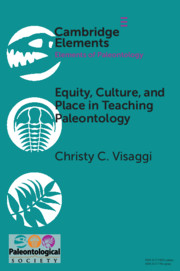Element contents
Equity, Culture, and Place in Teaching Paleontology
Published online by Cambridge University Press: 28 July 2020
Summary
Keywords
- Type
- Element
- Information
- Series: Elements of PaleontologyOnline ISBN: 9781108681766Publisher: Cambridge University PressPrint publication: 20 August 2020
References
- 25
- Cited by



